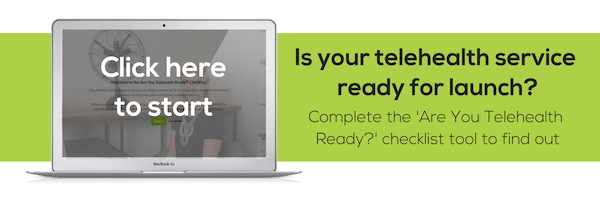5 Key Themes from the 2019 Australian Telehealth Conference

I spent the last 2 days attending the Australian Telehealth Conference in Brisbane.
The conference format, venue and teabag selection were nothing innovative.
However the sessions were, on the most part, heartwarming stories of successful digital practice rolled out across a huge range of settings.
The value of these gatherings is often in the identification of key themes.
These are areas of focus, or logical next steps to which we should direct our compass moving forward.
So in this post I have identified the 5 key themes that I took away from the 2019 Australian Telehealth Conference.
Key Theme 1: Bring telehealth services to people in metro areas
The Australian Telehealth Conference is dominated by large public sector organisations, government funded bodies and research organisations.
Traditionally, the funding provided for and by the above has been directed to rural and remote areas, with very good reason.
At the conference, however, there was a very loud call to action: ‘It’s time that the funding included people in metro areas.’
The list of populations who can benefit from digital practice grows and grows.
People with disabilities, chronic diseases, fatigue, bowel issues, the immuno-suppressed, the aged, carers, and people trying to manage medical conditions while holding down a full-time job – many of these people live in metropolitan areas.
If these people are denied telehealth options when there is a possibility this could be made available to them, it could actually be considered discrimination.
In this context, telehealth could be positioned akin to ramps, guide dogs and disability parking.
Key Theme 2: Telehealth is much more than video consultations
The focus of telehealth has well and truly moved away from just video calls.
Apps, online programs, digital assessment tools and cloud-based collaboration platforms are now seamlessly woven into examples of end to end telehealth services.
The most effective multi format services tend to be the ones that focus on a great user experience. They also harness the sweet spot between individualised care and pre-configured programs and tools.
Key Theme 3: Great telehealth services reflect the personality of the target geography and culture
As telehealth transcends geography to reach more people, I have often wondered how services will find their niche, and compete with other services that technically compete in the same area of specialisation.
The Australian Telehealth Conference showcased a huge range of examples of successful service models.
What often made them great was the way they wove the culture, the existing health service and the location specific needs of consumers into their offering.
It’s hard to put a finger on the formula for this. A service providing dermatology services to the Hawaiian islands, and a service training Torres Strait Islanders in using cameras to convey dental images to the mainland both showed me that culturally specialised niches are alive and well in telehealth.
Key Theme 4: Applications for VR and AR are growing rapidly
Virtual reality and Augmented reality have been talked about for years, and are not a new concept.
It does seem, however, that the applications for usage in healthcare are becoming much broader, while also becoming much more practical.
Patients are using VR headsets with guided programs to decrease reliance on pain medications.
Children barely notice their blood being taken when they are immersed in a virtual world.
Cardiac surgeons use a VR headset to plan their complicated heart surgeries, completing this planning process in less time and with fewer adverse outcomes.
Patients are being educated in a whole new way with 3D models of their body and condition.
Now granted, some of these may not relate directly to telehealth, but how about an augmented reality situation where your patient can see all of their normal home surroundings.
Suddenly you, their therapist, appear in a chair across from them in all your 3D glory, all whilst broadcasting from another city.
Key Theme 5: The user experience is improving but should still be a core focus
User experience, or as the cool kids say, UX, is having a real moment in telehealth.
UX basically refers to how smoothly the tech works and how pretty it looks.
Initially UX considerations revolved around what the experience was like for the patient, but increasingly, emphasis is being placed on making the experience seamless for the clinician.
Many proposed telehealth services have now completed trials with great outcomes.
These trials have often been driven by telehealth ‘Champions’ willing to battle through the technical difficulties.
The next stage for these services is scale. Scale means training more health professionals to participate in telehealth.
If the process is not made easy for these second-generation digital practitioners, a telehealth service can stumble.
The IT consultant is now very much considered as part of the digital health team, and improving the workflow in existing telehealth services is a crucial part in scaling up and rolling out to the masses.
All in all, I thoroughly enjoyed the Australian Telehealth Conference.
There were some amazing case studies, but there were also some topics that I felt were severely lacking.
But I’ll leave those for another blog post!
What do you think of these Key Themes? I’d love to hear your thoughts.


Really Great! Thanks Karen
You’re welcome Corey, so glad you found it useful.